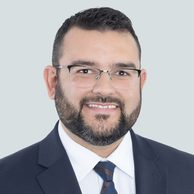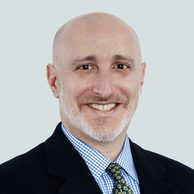How can we benefit from infusing elements of nature into our cities?
High vacancy rates in commercial real estate have sparked heated conversations about the future of office space and its place in the next phase of the city. Could offices be converted into housing? Could some be refurbished and refilled or are there alternative less-explored possibilities?
Carlo Ratti believes cities are a place where nature can thrive. The professor of urban technologies at the Massachusetts Institute of Technology (MIT), who also runs MIT’s SENSEable City Lab, joined a recent episode of Double Take to outline his vision for how so-called “vertical farms” and other forms of nature can interact with a reimagined city—one that serves a new purpose.
We have been working on smart cities, on food production in cities, and so on… all of this is trying to reach a better alliance between the natural and the artificial world. We could say that many of the challenges we are facing today – first and foremost climate change – are there because we have always considered the natural and the artificial world as two separate, almost competing worlds… We decided to find a better way to merge and to find an alliance between the natural and the artificial.
Carlo Ratti, professor of urban technologies at the Massachusetts Institute of Technology and director of MIT’s SENSEable City Lab
Ratti points to his group’s vision for the Jian Mu Tower in Shenzhen, China, a “farmscraper” with a building facade that is used for growing food.
When you build a skyscraper, one of the key things is actually to protect it from too much incoming radiation to avoid a greenhouse effect inside. And in our case, we said, ‘Well, instead of doing that, which means reflecting it of sunlight outside, and also increasing urban temperatures, well, why don’t we let the sun in, and use it, and turn it into energy, into food, and use it in order again to produce with a large hydroponic farm?’ And it turns out, when you do all the calculation, this can be quite effective. You need to use quite a bit of robotics, but robotics is increasingly employed in hydroponic farms. And then not only you can produce food, salad, according to estimates, for over 10,000 people, but also you create a very interesting experience for people inside, looking at the outside in the city, through this kind of green lens or embroidery in the facade of the building.
Carlo Ratti
According to Ratti, the vision to revitalize buildings in hollowed-out cities is clashing with a clear desire for workers to have more flexibility in the way they arrange their lives.
When you look at those two competing forces, I think we need to find a new equilibrium… This could be the beginning of a new city. We called it the playground city. And the playground city will be a city that allow us to meet, but in new ways. We do not want to meet in the old cubicle anymore, it does not make sense. If you need to go to a cubicle, you might well work from your kitchen table. But actually, we need to find new ways for the city to bring us together because only together in physical space we can be more creative and enjoy better the things we do every day.
Carlo Ratti
In Ratti’s opinion, the key for cities is not to lure people to them with incentives and subsidies, but to embrace the new way people relate to them by providing a rich experience through activities.
So I really think that the starting point is somehow we shouldn’t focus on the symptoms. We should really look at the cause of the malaise. And I think that is something that starts from really understanding better what the new normal post Covid is, embracing it, turning that into architecture, into urban planning. And then as a consequence of that, then we’ll also have a very lively offer of everything, from food and beverage, all the way to other opportunities in our cities and on our streets … The future is not something we should predict. The future is something that we should all build together.
Carlo Ratti
To hear more from Carlo Ratti, subscribe to “Double Take” on your podcast app of choice or view Nature and the City episode page to listen in your browser.
PAST PERFORMANCE IS NOT NECESSARILY INDICATIVE OF FUTURE RESULTS. Any reference to a specific security, country or sector should not be construed as a recommendation to buy or sell this security, country or sector. Please note that strategy holdings and positioning are subject to change without notice. For additional Important Information, click on the link below.
Important information
For Institutional Clients Only. Issued by Newton Investment Management North America LLC ("NIMNA" or the "Firm"). NIMNA is a registered investment adviser with the US Securities and Exchange Commission ("SEC") and subsidiary of The Bank of New York Mellon Corporation ("BNY Mellon"). The Firm was established in 2021, comprised of equity and multi-asset teams from an affiliate, Mellon Investments Corporation. The Firm is part of the group of affiliated companies that individually or collectively provide investment advisory services under the brand "Newton" or "Newton Investment Management". Newton currently includes NIMNA and Newton Investment Management Ltd ("NIM") and Newton Investment Management Japan Limited ("NIMJ").
Material in this publication is for general information only. The opinions expressed in this document are those of Newton and should not be construed as investment advice or recommendations for any purchase or sale of any specific security or commodity. Certain information contained herein is based on outside sources believed to be reliable, but its accuracy is not guaranteed.
Statements are current as of the date of the material only. Any forward-looking statements speak only as of the date they are made, and are subject to numerous assumptions, risks, and uncertainties, which change over time. Actual results could differ materially from those anticipated in forward-looking statements. No investment strategy or risk management technique can guarantee returns or eliminate risk in any market environment and past performance is no indication of future performance.
Information about the indices shown here is provided to allow for comparison of the performance of the strategy to that of certain well-known and widely recognized indices. There is no representation that such index is an appropriate benchmark for such comparison.
This material (or any portion thereof) may not be copied or distributed without Newton’s prior written approval.






